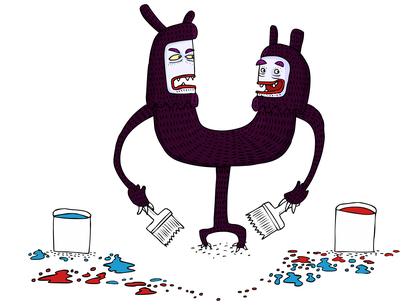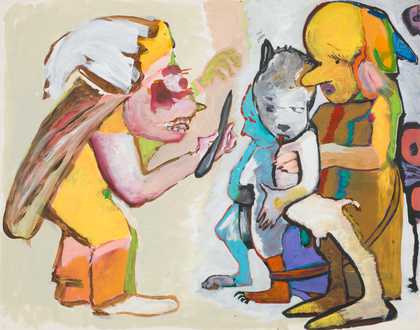
After William Blake
The Man Who Taught Blake Painting in his Dreams (counterproof) (after c.1819–20)
Tate
Did you know that the artist William Blake once saw angels in a tree in a London park called Peckham Rye? He used to have lots of visions like that.
William Blake was a poet and a painter who was born in Soho in London in 1757. He is an important figure of the Romantic age. Which was a time when artists and writers reacted to the massive changes happening in Europe, such as new machinery and big factories making cities much bigger and industrial. Romantic artists were excited by emotions and tried to reflect the awe and wonder of the natural world.
Blake was a very religious man and he felt that the amazing things he saw in the world came from God. Here is one of his paintings. It is a scene from the Bible where a dead man comes alive again.

After William Blake
The Raising of Lazarus ()
Tate
William Blake didn't really think of himself as a poet and a painter, he thought of himself as a craftsman. He thought all painters should be craftsmen and not think of themselves as better than that.
As well as painting Blake also made books of his poems which he illustrated. One of his most famous works is a book called Songs of Innocence and Experience. It was published in 1789 and was inspired by illuminated manuscripts made by monks in medieval times. One of the most famous poems in the book is called The Tyger.
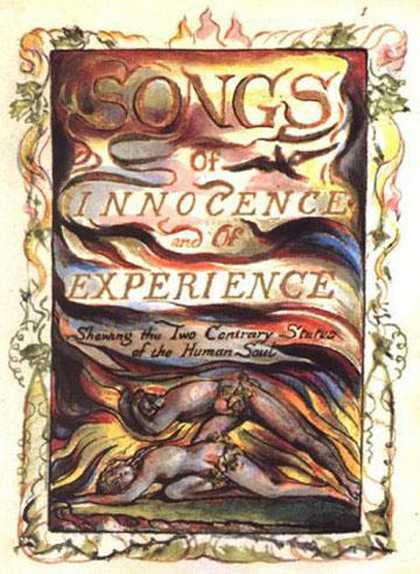
William Blake
Songs of Innocence and Experience
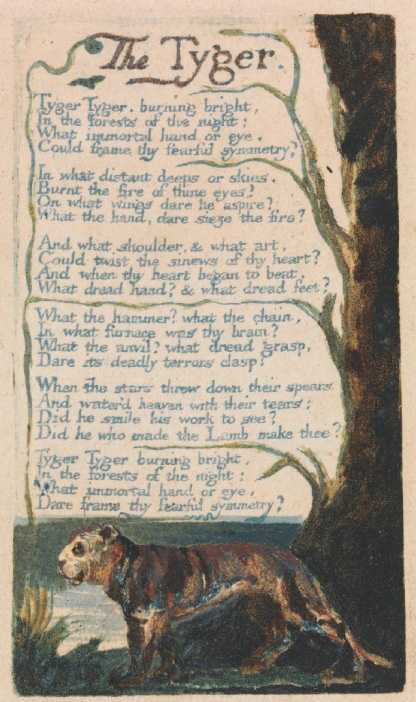
William Blake
Songs of Experience, The Tyger
Copy F, plate 42
© Yale Center for British Art, Paul Mellon Collection
The painting below is called The Good and Evil Angels.
Can you guess which is the good angel and which is the evil angel?
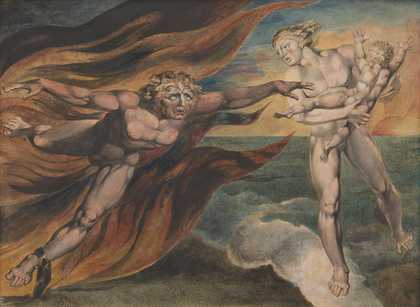
William Blake
The Good and Evil Angels (1795–?c.1805)
Tate
The evil angel has a chain attached to its ankle. Some art experts think this symbolises rational thought.
Rational thought is what we call it when there is a scientific explanation for something. The 1700s is often called the Age of Enlightenment, because it was a time when science began to explain many things about the world. Blake was worried that science would explain everything and then people might stop believing in God.
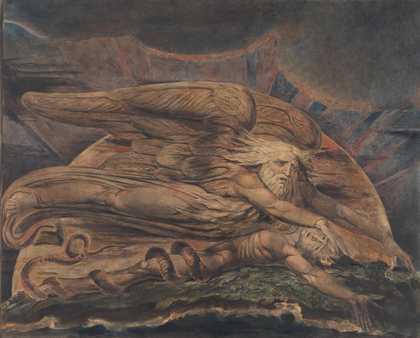
William Blake
Elohim Creating Adam (1795–c.1805)
Tate
William Blake died in 1827. He and his work might have been entirely forgotten because he was so different from every other artist at that time. But the Pre-Raphaelite artists, who came to prominence in the mid–1800s, loved Blake's work and called him a true visionary. Since then he has become an important figure in British art.
He is loved for his poems and his paintings and for the fact that he pursued his own path and was not influenced by others.
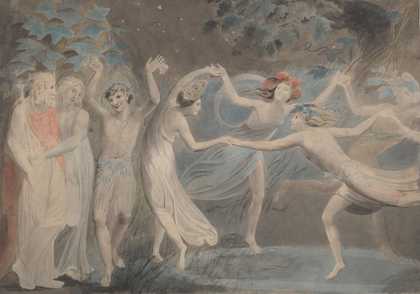
William Blake
Oberon, Titania and Puck with Fairies Dancing (c.1786)
Tate
